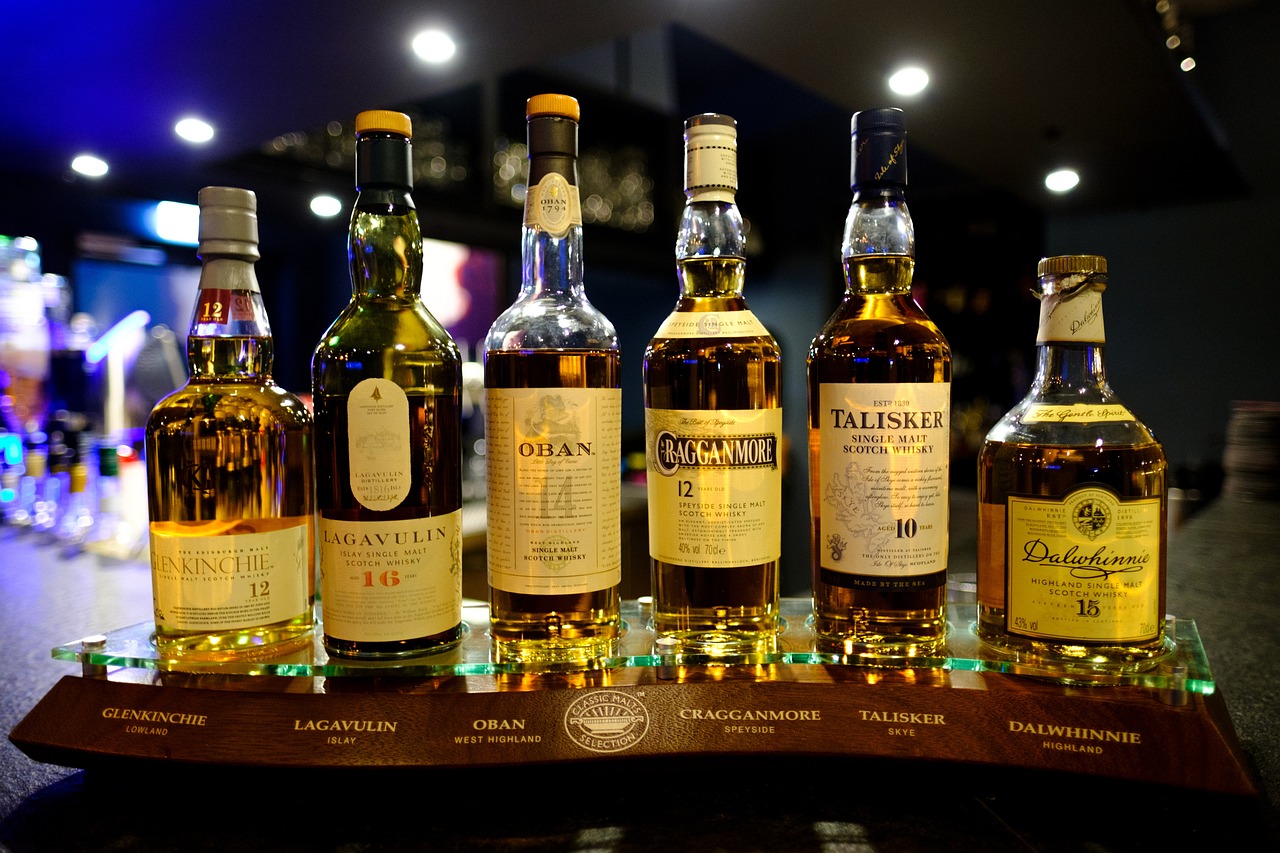3rd Annual Alcoholic Beverages Virtual Symposium - Spirits

Pixabay/Bruno/Germany: 3rd Annual Alcoholic Beverages Virtual Symposium - Spirits
Join Agilent and GERSTEL for our annual virtual seminar discussing how you can assure safety, authenticity, and quality of alcoholic beverages. Sharing the latest in technology developments and capabilities, new applications, and customer stories. Topics include distilled beverages, wine and beer. There is something for everyone in this seminar series and we hope to see you there.
Attend live and receive an Agilent GC wine glass!
Presentation 1: Non-targeted and Targeted Analysis of Spirits Aroma/Flavor Compounds using DHS-GC(-GC)-MS
Chromatographic analysis of distilled spirits has witnessed a sea change over a recent short period of years. Previous approaches which relied on solvent extraction procedures to enrich the secondary aroma/flavor compounds from the dominant ethanol-water base, can now be replaced by solventless, automated instrumental methods. Such solventless approaches comprise Stir Bar Sorptive Extraction, Static and Dynamic Headspace and Large Volume Injection. These methods rely on the ability of a PTV (Programmable Temperature Vaporization) injector to enrich analytes of interest before transfer to the GC column, while venting unwanted matrix.
Complex GC-MS data files obtained in this way, can also be further processed by powerful filters such as Spectral Deconvolution followed by RI based isolation and verification of identities of aroma/flavor compounds. The sequential progress of the GC-MS data file through these various filters and finally into a chemometric software for investigative discrimination of samples is achieved by simple mouse clicks. This is a very attractive outcome for practicing flavor Chemists and could be regarded as the final fulfillment of what previously could only be an outcome to aspire to.
These solventless techniques can be so efficient, and sometimes give such complex GC-MS data files, that often an additional chromatographic dimension may be required, especially for detection of ultra-trace compounds. This is supplied by chromatographic heart cutting where elution segments from one column are transferred to a second column of different polarity for increased resolution. The necessary instrumental configurations required for this purpose are also available in fully automated format.
Key Learning Objectives/What attendees will learn:
- Appreciation of how analysis of distilled spirits has moved into a more modern approach using solventless extraction techniques featuring full automation from sample treatment to GC injection.
- Aroma Office in conjunction with MS Spectral Deconvolution will be introduced as a powerful combination for filtering and listing of aroma compounds from complex GC-MS data files.
- Two-dimensional Gas Chromatography (2D-GC-GC) will also feature as a valuable tool for isolation of key compounds from interfering matrix in extremely complex data files.
Who Should Attend: Chemists and Technicians involved in aroma research and analysis
Presenter: Dr. Kevin Mac Namara (Consultant)
Dr Kevin Mac Namara graduated from the National University of Ireland with a speciality in synthetic organic chemistry. He later joined the Irish Government Alcohol Monopoly and subsequently moved to Irish Distillers Group in 1981 as Head of Technical Development where he established a high profile centre for distilled spirits research. When Irish Distillers merged into the global Pernod Ricard Group in 1990 he assumed a much enlarged role and represented Ireland in EU alcohol affairs for many years before retiring in 2012.
Presentation 2: A Variety of Extraction Techniques Used to Determine Analytes of Interest in Distilled Spirits
Analysis of distilled spirits using GC-MS can be challenging due to the multitude of flavor and aroma compounds that exist in the predominantly ethanol-water mixture. The optimal extraction technique or techniques must be able to isolate and pre-concentrate the analytes before introduction into the GC-MS to produce meaningful data. GERSTEL offers numerous automated sample introduction and extraction techniques including Static Headspace (SHS), Solid Phase Microextraction (SPME), Thermal Desorption (TD), Dynamic Headspace (DHS), and Thin Film Solid-Phase Microextraction (TF-SPME) and Pyrolysis. GERSTEL offers additional features to each extraction technique including Multiple Headspace Sample Enrichment (MHSE) and TDx Multidesorption that can provide significantly more mass on column and lower detection limits. GERSTEL also offers unique detection capabilities with the olfactory detection port (ODP) allowing the analyst to smell compounds as they elute from the GC column. With simultaneous mass spectral detection, key odor-active compounds can be identified in complex products.
Common challenges encountered when analyzing distilled spirits include reproducibility of batches, identifying and quantifying off-odors produced during the fermentation process, and consumer satisfaction, especially in the context of competitors, to name a few. This presentation will show how GERSTEL addresses these complex challenges by having a complete “toolbox” of extraction, introduction and detection options that can be combined and optimized as needed.
Key Learning Objectives/What attendees will learn:
- Theory and applicability of SHS, SPME, SBSE, TF-SPME, DHS, and pyrolysis.
- How to decide on the most optimal extraction technique based on research challenges.
Who Should Attend: Analytical chemists in the food, flavor, fragrance, and beverage industries
Presenter: Megan Harper (Applications Scientist l, GERSTEL, Inc.)
Megan Harper graduated from the University of Maryland Baltimore County in 2020 with a Bachelor of Science Degree in chemistry and received her Master of Science Degree in forensic science with an analytical chemistry track from Towson University in 2022. At GERSTEL, Inc., Harper applies her knowledge on sample extraction and introduction techniques to help solve complex problems for customers across the USA, including those involving distilled spirits.